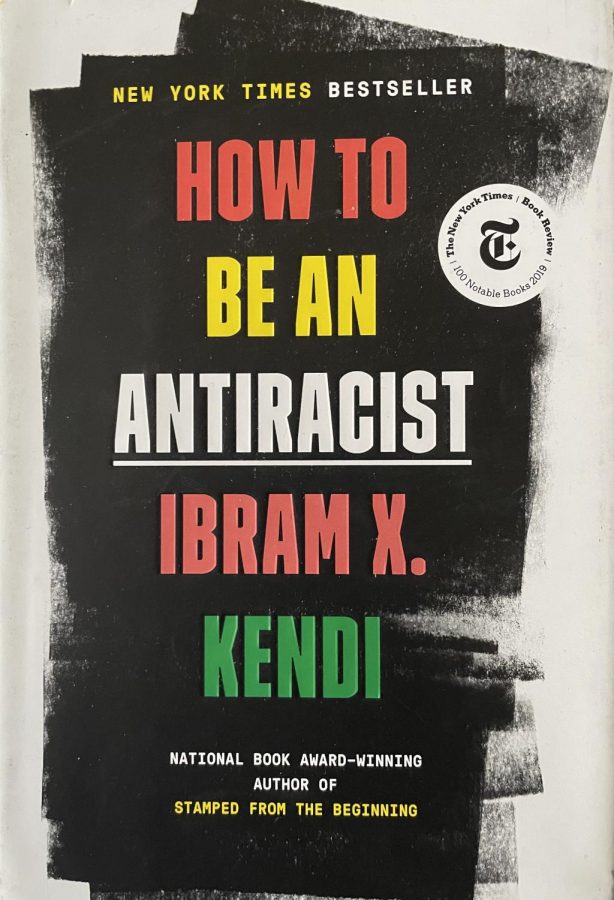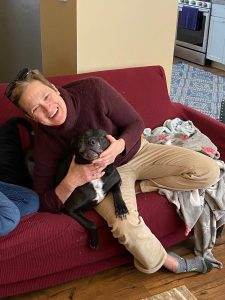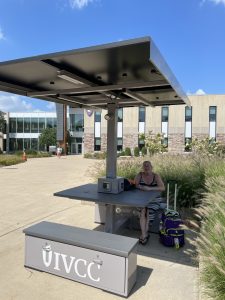One Book, One College addresses gender, sexuality, and race
April 8, 2021
As part of Women’s History Month and One Book, One College, Illinois Valley Community College’s professor Kimberly M. Radek-Hall led a discussion based on gender, sexuality, and race with three other panelists for a video released March 30. The panelists examined How to Be an Antiracist by Ibram X. Kendi as well as intersectionality and inequity.
Radek-Hall began the discussion by asking the panelists how they would explain critical race theory to those who are not used to thinking about race, color, gender, or privilege as well as how significant they believe it is that former President Donald Trump wished to stop funding for diversity, equity, and inclusion training.
The panelists included Rev. Ray Jordan, a pastor at First Community Church UCC and adjunct faculty at Southern Methodist University in Dallas, Texas, Rev. Dr. Angela Walker, an AP English Teacher for the Charlotte Mecklenburg System in Charlotte, North Carolina, and Dr. Jjenna Hupp Andrews, an Associate Professor of Studio Art at Mott Community College in Flint, Michigan who spoke on this topic as well as their viewpoints on teaching critical thinking as a society and culture.
“What diversity training does and what critical race theory does, in my estimation, it helps to retell the story differently,” stated Jordan. “It helps to look at the policies, the systems, societal norms, and the histories of our country and says okay, this is what you have been told about it, but what about looking at it from a different angle.”
He continued by explaining, “The most important word in critical race theory to me is not race, the most important word is critical. It is a critique of the status quo; using the history and the pain of people of color, primarily, in order to retell that story and to re-envision what America has been and what it can be.”
The panelists listened intently as Walker detailed that dominant narrative stood out to her when speaking about critical race theory. She elaborated that critical race theory can center the narratives of those whose voices are not being amplified.
“Critical race theory calls us to examine that, and to challenge and to question the ways that whiteness has been seen as the normative experience. So, if you are not in that experience of being a white person and, particularly a white male, that you are somehow deviant… criminal… inferior,” commented Walker.
During the panel, there was great discussion and emphasis on power-sharing and the need to have people in a space who can recognize blind spots that privilege will not allow one to see as well as the importance of grassroots to be consistently active in advocacy if they wish to see change.
Jordan also spoke about black, Indigenous, and people of color not having the platform they need due to the overpowering amount of money implemented in politics. He explained that BIPOC voices are not able to be clearly heard over the money.
Andrews elaborated by explaining the importance of introspection and honest engagement to enact change. She also detailed that bringing multiple voices to the table and ensuring their agency would be beneficial if society hopes to see change in the future.
“I would say that the majority of all of this really starts with a willingness and a desire to want something different and to assume that all of us, at one point, are going to be wrong… and being humble enough to acknowledge that,” responded Walker.
Within the conversation, the panelists went into detail on how it is not a matter of just being not racist, but instead, choosing not to be and being intentional about it. Jordan explained that it is more effective to tell someone their behavior is racially insensitive or problematic rather than telling them they are racist.
“Rather, I say, you’re a product of American society which is steeped in white supremacy and patriarchy,” defined Jordan as he continued the discussion.
Radek-Hall began many discussions from main ideas derived from the book How to Be an Antiracist by Kendi including the effects of internalized racism and sexism, the origin of feminism to attain equality, and how to alter the social-constructed identity of beauty to be more inclusive.
“It would have been a true effort to feel and be beautiful in America as a black person and not be tempted to somehow alter your appearance in a whole variety of ways,” pointed out Jordan as he elaborated on beauty standards and how it is historically a real struggle in African American communities.
“Kendi, in his book, says that he does believe we can defy the odds, heal society of racism, and create an antiracist society,” explained Radek-Hall. “He doesn’t say this is going to be easy; he says it’s like fighting an addiction and that it requires self-awareness, constant self-criticism, and regular self-examination.”
The panelists also touched on how students and future generations give them hope that the world is changing since they are aware time is limited. They emphasized that younger people see things from a different perspective and are mindful of the possibilities.
Students can find the recorded panel on IVCC’s Diversity, Equity, and Inclusion page of the college’s website under Women’s History Month and One Book, One College, or by visiting https://libguides.ivcc.edu/onebookonecollege/events.




